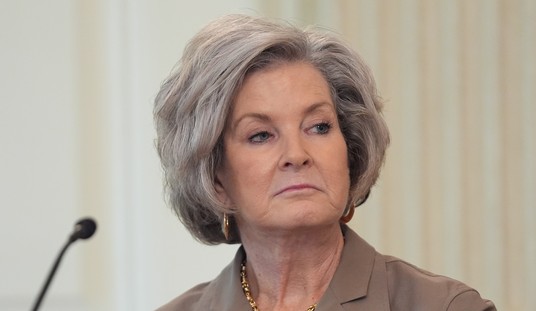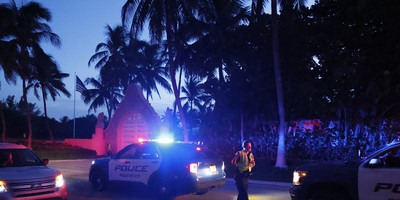The progressive takeover of the public schools—dreamed up by John Dewey and put into practice over the course of at least the last sixty years—has produced nothing other than absurdity, superficiality, and political bias in the nation’s classrooms. So utterly impoverished has become the quality of schooling and the nation’s conversation about it, that whenever a so-called “reform” comes into existence—engineered by the same folks who brought us school failure in the first place—we can hardly recognize it for the shell game that it is and the continued decline that it will produce.
Such is now the case with the Common Core, whose effects on the teaching of English are fivefold: a continuation of the mind-numbing ways of teaching literature that have plagued the schools for the last four or five decades; the further erosion of great literature by chopping up any remaining classics into slim excerpts almost hidden in the monstrous anthologized textbooks; the transparent promotion of post-modern and multicultural authors who paint a bleak, anti-heroic view of human life and of this country; the introduction of so-called “informational texts” (non-fiction works, often recently written) frequently lacking in literary value and whose purpose is outright political indoctrination; and the wholesale misinterpretation of American principles and what is generally called the good. We see the effects of this story-killing combination when we bother to look into actual textbooks—which essentially control the lessons of the public schools.
Last week I showed that the Common Core documents offer a model of how outside scholars might be deployed to offer slanted, erroneous views of foundational documents such as the Constitution. Now I should like to show how that same technique can be effected even more dramatically in a school textbook. Case in point: Sojourner Truth’s “An Account of an Experience With Discrimination,” featured in Pearson/Prentice Hall’s The American Experience, volume one, which deals with Truth’s efforts to end discrimination on street cars in Washington, D.C. It should be noted first that the actual selection of Sojourner Truth’s account is right around 300 words, which could easily fit on half a page. Yet it takes the editors eight pages to present the selection due to the inclusion of comments by a modern scholar, two additional introductions to the selection, some really hokey preparatory material that almost exceeds the selection in length, a full-page portrait of Truth (in addition to her photograph that appears on another page), and a page and a half of more hokey questions following the selection, under titles such as “Critical Reading” and “Literary Analysis.” In short, in a more economical textbook such as the Norton Anthologies used in colleges, those eight pages could have had seven more pages of Sojourner Truth’s actual words. Thus, your tax dollars are paying for a lot less actual literature (or primary sources) than the size and cost of these hulking literature textbooks suggest.
Recommended
Any number of questions arise. Why should outside scholars be brought in to offer “interpretations” (and to promote their writings)? That sort of thing did not happen when I was in school. Why should so much space be devoted to prompt questions before and after the reading? Is it not the province of competent teachers to come up with their own set of questions? Unless . . . (No, we’ll consider the question of teacher competence at a later time). How hokey are these questions? Here is a true/false question that appears under the heading “Vocabulary Acquisition and Use”: “Someone who experiences an assault will have positive feelings.” Answer [provided in the margins of the Teacher’s Edition]: “False. An assault is a violent attack, so someone who experiences an assault will probably experience fear or anger.” (This is for a class of high-school juniors.) Finally, would not this selection be better placed in a history class since it is really not a literary work: neither part of Truth’s original Narrative nor one of her famous speeches?
The mystery of why more space is not given to Sojourner Truth’s own words is solved when we actually read her. She was utterly clear on where her ideas of equality came from. In a speech to the Michigan State Sabbath School convention, she said this:
Does not God love colored children as well as white children? And did not the same Saviour die to save the one as well as the other? If so, white children must know that if they go to Heaven, they must go there without their prejudices against color, for in Heaven black and white are one in the love of Jesus.
In perhaps her most famous and powerful speech, “Ain’t I a Woman?” she drew upon the same source:
That little man in black there, he says women can’t have as much rights as men ’cause Christ wasn’t a woman! Where did your Christ come from? Where did your Christ come from? From God and a woman! Man had nothing to do with Him.
If the first woman God ever made was strong enough to turn the world upside down all alone, these women together ought to be able to turn it back, and get it right side up again!
Further, in a famous encounter at an abolitionist rally before the Civil War, Frederick Douglass ended his address on a depressing note. Sojourner Truth stood up and asked, “Frederick, is God dead?” Despite faith in God being the chief source of her inspiration and in her speeches God being omnipresent, in this selection there is no mention of God. Perhaps this is just an accident, yet the glaring omission or misinterpretation of religion is something I have found again and again in the Common Core. In this case, we simply do not get the whole truth about Truth.
We begin to see the real point of the selection more clearly when we read what Nell Irvin Painter, a “well-known” and “award-winning” historian and former director of the African American Studies program at Princeton, and a leading scholar on Truth, writes in her introduction. At first glance, it does not appear that anything Professor Painter states is particularly incendiary. She writes of the discrimination Sojourner Truth experienced and how other black people faced similar treatment on public transportation up through the middle of the twentieth century, both being true statements. More subtly, however, Professor Painter tells us that there were “Two American Histories” at work:
Truth’s experience of discrimination in public transportation belongs to two American histories . . . The first history is that of Washington, D.C., a Southern city. The second history is that of discrimination against African Americans throughout the United States.
See how both of these “two histories” reflect poorly on the United States and her people? Why is neither one of these “two histories” the story of liberty? If we are to adopt the view that there were two American histories, would it not be more accurate to say that one of those histories was the stubbornness of human depravity that clung to the kinds of oppression and discrimination that had existed in the world for thousands of years—and the other was Americans’ centuries-long struggle to achieve liberty and justice, in other words, to make good on the principles of the Declaration of Independence? Did freedom in this country just appear out of nowhere with the civil rights movement? That is the impression given by Professor Painter’s “Themes Across Centuries: Scholar’s Insights,” phrases that have the Common Core seal stamped right next to them.
The reason for, or at least the effect of, the three introductions to Sojourner Truth’s 300-word account must now seem a little clearer. Students are told four different times that there was a lot of prejudice throughout America even after the Civil War. So much editorial warm-up in fact makes the actual selection, in which a streetcar conductor tries to prevent Truth from riding on his car, seem almost anti-climactic. Furthermore, so much emphasis is put upon the actions of the conductor that the company president’s firing of his employee and recommendation that he be tried for assault do not seem to count for much. So Truth (both the woman and the ideal) prevailed in this case. An instance of business and citizens and the law working in favor of liberty and equality, however, would not be a part of the “two histories” of America being presented here. So the glass must remain half empty.
Yet I think that the actual encounter of Sojourner Truth or learning anything about her great life is not the real purpose of this assignment. If the purpose were to learn about Sojourner Truth, at least one of her famous speeches in its entirety would be printed, as well as a much richer selection from her Narrative. No, the real purpose is to find something in her life that allows the textbook editors to paint the view of the world they want young people to have. That purpose we discover in a dialogue that unfolds under the headings “Critical Reading” in the students’ edition and “Critical Thinking” in the Teacher’s Edition adjacent Professor Painter’s introduction:
2. Key Ideas and Details (b) Speculate: Why do you think discrimination persisted in both the North and the South even after slavery ended?
Possible response [in Teacher’s Edition]: Discrimination persisted because it was deeply embedded in American traditions and because slavery had to be ended forcibly rather than voluntarily.
“Deeply embedded in American traditions”: that phrasing does not make “American traditions” sound terribly noble or desirable. Was not the striving for freedom and equality also a deeply embedded American tradition? The dialogue continues:
3. Integration of Knowledge and Ideas: Identify two ways in which Painter’s commentary helps you better understand Sojourner Truth’s experiences and reactions.
Possible response [in Teacher’s Edition]: Painter’s commentary shows how the incidents Truth relates are similar to events in our own time. . . .
Really? Professor Painter did not actually refer to discrimination in “our own time,” but rather implied that such things largely ceased after “the middle of the twentieth century.”
4. Integration of Knowledge and Ideas: Decide what an individual who experiences or witnesses discrimination should do.
Possible response [i.e. the response the teacher is supposed to program into the students]: Individuals experiencing or witnessing discrimination should record the name of the person doing the discriminating and report the incident as soon as possible. Witnesses should also do their best to take care of the victims if there is physical injury. They should also make it clear that they saw what happened and that it will be reported.
The lesson: since racism is so embedded in American traditions, and there is still plenty of racism out there, you teenagers (who are sensitive and emotional and easily provoked) need to go out looking for the slightest hint of racism and report it wherever you see it.
Here’s a question for “critical reading and thinking”: Is this lesson teaching American literature or community organizing via the public schools?
























Join the conversation as a VIP Member